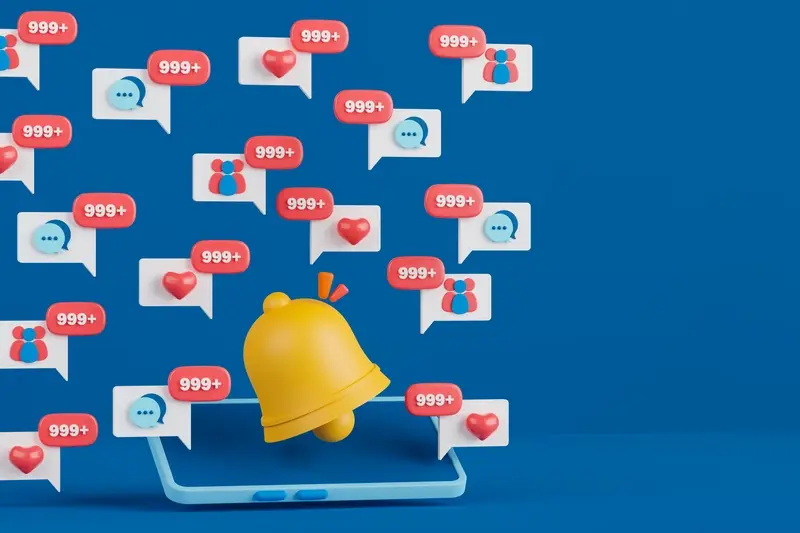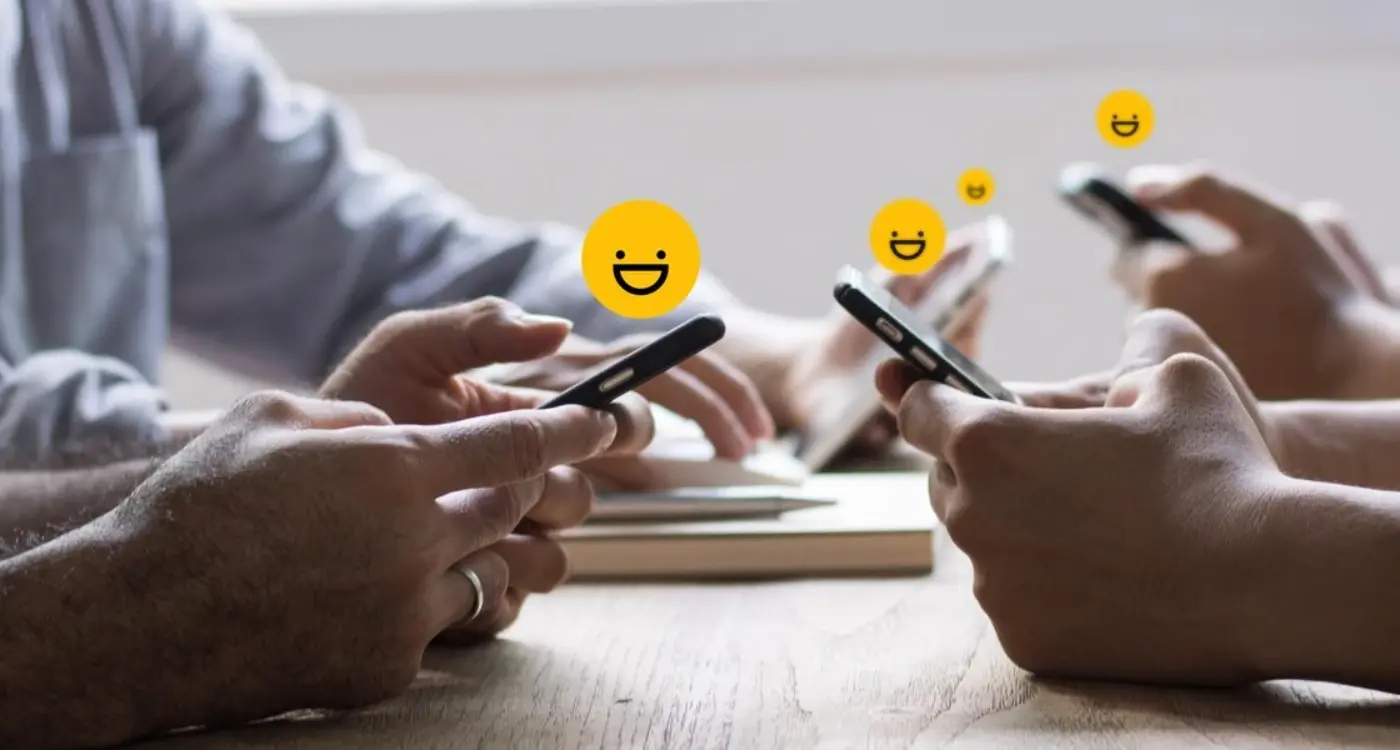How Do I Personalise Push Notifications For Different User Groups?
You've probably noticed it yourself—you send out a push notification to all your users and barely anyone bothers to open it. Meanwhile, your competitors seem to have cracked the code and their users are constantly engaging. It's frustrating, isn't it? You're putting effort into crafting messages but they're falling flat because you're treating all your users the same way.
The thing is, your users aren't identical. Some might be brand new to your app and need gentle encouragement, whilst others are power users who want advanced features and updates. Some prefer shopping notifications in the evening, others want workout reminders at dawn. Sending the same message to everyone is like shouting into a crowded room—most people won't hear you, and those who do probably won't care.
The difference between a good push notification and a great one isn't just the message—it's knowing exactly who should receive it and when.
That's where user segmentation for your mobile app comes in. By grouping your users based on their behaviour, preferences, and characteristics, you can create personalised push notifications that actually resonate. This guide will walk you through everything you need to know about segmenting your users and crafting targeted messages that get results.
Understanding User Segmentation
User segmentation is quite simple really—it's just grouping your app users based on things they have in common. Think of it like sorting your friends into different groups; you might have your football mates, your work colleagues, and your old school friends. Each group is different and you probably talk to them differently too.
Why Segmentation Matters
When you send push notifications to everyone in exactly the same way, you're missing a massive opportunity. A teenager using your gaming app doesn't want the same messages as a busy parent using your shopping app. They're at different stages of life, they use apps differently, and they respond to different things.
I've worked with clients who saw their engagement rates double just by splitting their users into three basic groups. Nothing fancy—just new users, regular users, and users who hadn't opened the app in a while. Each group got slightly different messages and the results were brilliant.
Basic Segmentation Types
You can segment users in loads of ways: by age, location, how often they use your app, what features they use most, or even what time of day they're most active. The key is starting simple; don't try to create twenty different segments straight away or you'll tie yourself in knots. Pick two or three obvious groups and build from there.
Setting Up Your User Groups
Right, so you understand why user segmentation matters for your mobile app—now comes the fun part of actually setting up those groups. This is where things get practical and you'll start seeing real patterns emerge from your user data.
The trick is to start simple and build from there. Most apps benefit from basic groups like new users, active users, and users who haven't opened the app in a while. You might also want to group people by what they do in your app—are they browsers or buyers? Do they prefer certain features over others?
Common User Groups That Actually Work
Location-based groups work brilliantly for most apps. Someone in London probably wants different content than someone in Manchester. Age groups can be useful too, but don't go overboard—three or four age brackets are usually enough.
Behaviour-based groups are where the magic happens though. Think about users who complete purchases versus those who abandon their cart, or people who use your app daily versus weekly users. These groups tell you so much about what motivates different people and are crucial for keeping users engaged with your app.
Start with no more than five user groups when you're beginning. You can always add more later, but too many segments early on will overwhelm your push notification strategy and dilute your messaging.
Most push notification platforms make creating user groups straightforward. You'll typically set rules like "users who made a purchase in the last 30 days" or "users located in the UK who haven't opened the app for 7 days." The key is making sure your groups don't overlap too much—you don't want users getting mixed messages.
Collecting User Data for Personalisation
Getting the right data from your users is like being a detective—you need to know what clues to look for and how to gather them without being too obvious about it. The good news is your app is already collecting some of this information naturally through user behaviour.
Start with the basics: what users do in your app, when they use it, and how often they come back. This behavioural data tells you loads about their preferences without them having to fill out boring forms. Track which screens they visit most, what features they use, and where they tend to drop off.
What Data Should You Collect?
You'll want to gather information across several key areas to build proper user profiles:
- Demographics: age, location, language preferences
- Behavioural patterns: usage frequency, favourite features, session length
- Purchase history: what they buy, when they buy, spending patterns
- Engagement metrics: which notifications they tap, what content they share
- Device information: iOS or Android, phone model, app version
Getting Users to Share More
The trick is asking for information at the right moment. Don't bombard new users with lengthy questionnaires—they'll just delete your app. Instead, collect data gradually through natural interactions. Ask about preferences when they're actually using related features, and always explain why you're asking. People are more willing to share when they understand the benefit.
Creating Targeted Push Notification Content
Now that you've got your user segmentation sorted and your groups set up, it's time to write content that actually speaks to each segment. This is where the magic happens—and where most people mess it up! I've seen countless apps send the same generic "Hey, check this out!" message to everyone, wondering why their engagement rates are terrible.
The secret is matching your message to what each group cares about. Your fitness enthusiasts don't want to hear about your new recipe features, and your cooking fans probably aren't interested in your latest workout tracker updates. Sounds obvious, right? Yet so many apps get this wrong, which is why understanding notification best practices is so crucial.
Writing for Different User Types
Each user segment needs its own voice and focus. Your power users might appreciate advanced tips and exclusive features, while newcomers need gentle guidance and encouragement. The language should feel natural—not like it's been written by a robot or marketing committee.
The best push notifications feel like a helpful friend tapping you on the shoulder, not a salesperson shouting in your ear
Content That Converts
Keep your messages short and actionable. Most people scan notifications quickly, so you've got about three seconds to grab their attention. Use specific numbers when possible—"3 new messages" works better than "new messages"—and always include a clear next step. Your mobile app's success depends on these small details that make users feel understood rather than marketed to.
Timing and Frequency Strategies
Getting the timing right for push notifications is probably one of the most overlooked aspects of personalisation—and honestly, it's where I see most apps get it completely wrong. You could have the most brilliant message in the world, but if you send it at 3am when your users are sleeping, it's going to annoy them more than help them.
The key is understanding when your different user groups are most active and receptive. Your commuter segment might respond best to notifications at 8am and 6pm, whilst your evening users prefer messages after 7pm. Students? They're often night owls, so later timings work better. I always tell clients to start by looking at their app usage data—when are people actually opening your app? That's your golden window.
Finding Your Sweet Spot
Frequency is just as important as timing. Send too many notifications and people will switch them off or delete your app altogether. Too few and you'll be forgotten. Most successful apps I've worked with follow these guidelines:
- High-engagement users: 2-3 notifications per week maximum
- Regular users: 1-2 notifications per week
- Occasional users: 1 notification every 2 weeks
- New users: Welcome sequence over first 7 days, then reduce
Respecting User Preferences
Always give users control over when and how often they hear from you. Some people love daily reminders; others prefer weekly summaries. The smart approach is to ask users during onboarding what works for them, then adjust your strategy accordingly. Getting personalised onboarding right sets the foundation for effective notification preferences.
Testing and Measuring Success
Right, you've set up your user segmentation and sent out your personalised push notifications—now comes the fun part: seeing if they actually work! Testing your notifications isn't just about sending them out and hoping for the best; it's about measuring what happens next and learning from it.
Start by tracking your key metrics. Open rates tell you how many people actually tapped on your notification, whilst conversion rates show you how many took the action you wanted them to take. Don't forget about opt-out rates either—if lots of people are switching off your notifications, that's a clear sign something isn't working.
What to Track
- Open rates by user segment
- Click-through rates to specific app screens
- Time spent in app after notification
- Conversion rates for different user groups
- Unsubscribe rates
A/B testing is your best friend here. Send slightly different versions of the same notification to different parts of your user segments—maybe change the wording, the emoji, or the call-to-action button. The results will show you what resonates with each group and help you develop better content strategies for your app.
Test one element at a time. If you change the message, timing, and emoji all at once, you won't know which change made the difference!
Most mobile app analytics tools will give you detailed breakdowns of how each user segment responds to your notifications. Use this data to refine your approach and make your future campaigns even more effective. Remember, successful apps understand that customer engagement through mobile apps requires constant refinement and testing.
Advanced Personalisation Techniques
Once you've mastered the basics of user segmentation and personalised messaging, you can start exploring more sophisticated approaches. Location-based targeting is particularly powerful—imagine sending lunch deals to users near your restaurant at exactly the right time. This kind of geo-targeting can significantly benefit small businesses looking to drive foot traffic.
Consider implementing dynamic content that changes based on user behaviour patterns. If someone typically shops for workout gear on Monday mornings, your app can automatically surface fitness-related notifications at the optimal time. This level of personalisation makes users feel like your app truly understands their needs and preferences.
Integration with other marketing channels can amplify your personalisation efforts. When your mobile app works seamlessly with your email marketing, social media, and website, you create a unified customer experience. This holistic approach is what separates great apps from merely good ones.
Don't forget about seasonal and contextual personalisation either. Your Christmas shoppers have different needs than your summer holiday planners. By aligning your push notifications with real-world events and seasonal trends, you'll see much higher engagement rates. The key is being relevant to your users' current situation, not just their general preferences.
Building Your Mobile Marketing Strategy
Personalised push notifications shouldn't exist in isolation—they need to be part of a broader mobile marketing strategy. Think about how your notifications complement your other marketing efforts and contribute to your overall business goals. Are you driving sales, increasing app usage, or building brand loyalty? Each objective requires a different approach to personalisation.
Consider how your app can help your brand stand out in a crowded marketplace. Personalised notifications are one of the most direct ways to communicate with your customers, so make sure every message reinforces your brand values and personality. Your tone of voice, timing, and content choices all contribute to how users perceive your brand.
Remember to align your notification strategy with your overall mobile marketing strategy. While tactics may evolve, the fundamental principles of understanding your audience, delivering value, and measuring results remain constant. Your personalised push notifications should support your broader marketing objectives, not compete with them.
Conclusion
After years of working with apps that send millions of push notifications each month, I can tell you that personalised messaging isn't just a nice-to-have feature—it's what separates successful apps from the ones that get deleted. The difference between a 2% open rate and a 15% open rate often comes down to how well you understand your users and speak to them directly.
Getting personalised push notifications right takes time and patience. You'll need to collect the right data, segment your users thoughtfully, and test different approaches until you find what works. Some campaigns will flop spectacularly (I've seen plenty of those!) whilst others will exceed all expectations. That's completely normal and part of the learning process.
The key is to start simple and build from there. Begin with basic segmentation—maybe new users versus returning users, or users in different locations. Once you've got that working well, you can add more sophisticated targeting based on behaviour, preferences, and engagement patterns. Your users will notice the difference, and your app's performance metrics will thank you for it.
Most importantly, always put your users first. Personalisation should make their experience better, not overwhelm them with messages they don't want. Get that balance right, and you'll have users who actually look forward to hearing from your app.
Share this
Subscribe To Our Learning Centre
You May Also Like
These Related Guides

How Many Push Notifications Are Too Many For App Users?

Why Do 90% Of Apps Fail The Psychology Behind App Success?



